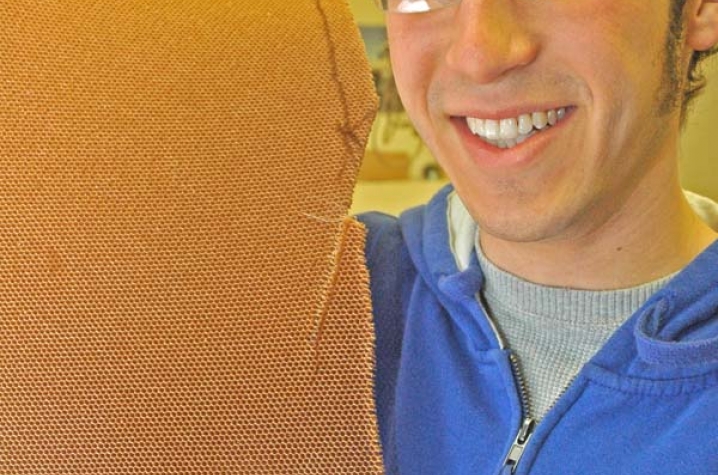UK Solar Car Team In Race Against Time
LEXINGTON, Ky. (March 23, 2010) − The clock ticks.
Suspense builds.
Will they make it?
That's the big question facing the University of Kentucky Solar Car Team, as the calendar pages flip closer to summer and the racing season approaches.
"We're hoping to have the new car ready in April," says Brent White, the team's business manager.
He's talking about it while standing next to a mold for the underside of the next version of the solar car, dubbed "Gato Del Sol IV." Another mold holds the top of the car's shell, but the underside hasn't made as much progress.
"Yeah, we've got a long way to go," White says.
That's not to say the team is discouraged. There's a lot of enthusiasm among the 20 or so regulars, students from across the UK College of Engineering who are active participants in readying Gato Del Sol IV.
"Beginning in February, we started working on the car every night at 7," says Sam Nicaise, the overall team leader.
Still, the challenge is there: Get the car built, tested and ready to compete in June's Formula Sun Grand Prix in Cresson, Texas, the qualifying race for the following week's American Solar Challenge, an 1,100-mile race from Tulsa, Okla., to Chicago.
"It'll take a full day and maybe 12 people to get the shell put together," he says.
Here's where things stand in the Terrell Building garage, the place the car calls home: The top of the shell is resting in the mold, with strips of carbon-composite fabric positioned beneath a layer of honeycomb paper. The next step involves covering the paper with another layer of carbon-composite fabric, epoxy-cementing it in place and sealing its shape with a vacuum.
Finally, the team will cement 2,132 gallium arsenide solar cells atop the shell. The photovoltaic cells, which offer a marked improvement over the silicone solar cells on previous versions of Gato Del Sol, will convert sunlight to electricity, to be stored in batteries until it powers the motor.
Then the team will repeat the process with the bottom of the shell, except for mounting solar cells.
The team posts regular updates on its Web site, and has a Twitter feed.
Gato Del Sol IV will be sleeker and lighter than its older sister. Instead of 450 pounds, the car -- aluminum chassis, motor and batteries, and shell -- has shed 50 pounds.
"We'll be at the edge of what we can do weight-wise," Nicaise says. The only way to make it lighter would be to use extremely expensive NASA-style metals, but that could start to affect the car's road safety.
The new shell also repositions the cockpit, moving the driver about a foot farther back than Gato Del Sol III's body.
The team knows March is a critical month. That's why they were in the Terrell Building during spring break instead of on a beach.
Says Krishna Prayaga, the team's electrical and systems engineer: "We'll be having our fun in June, when we're driving the car cross-country."






